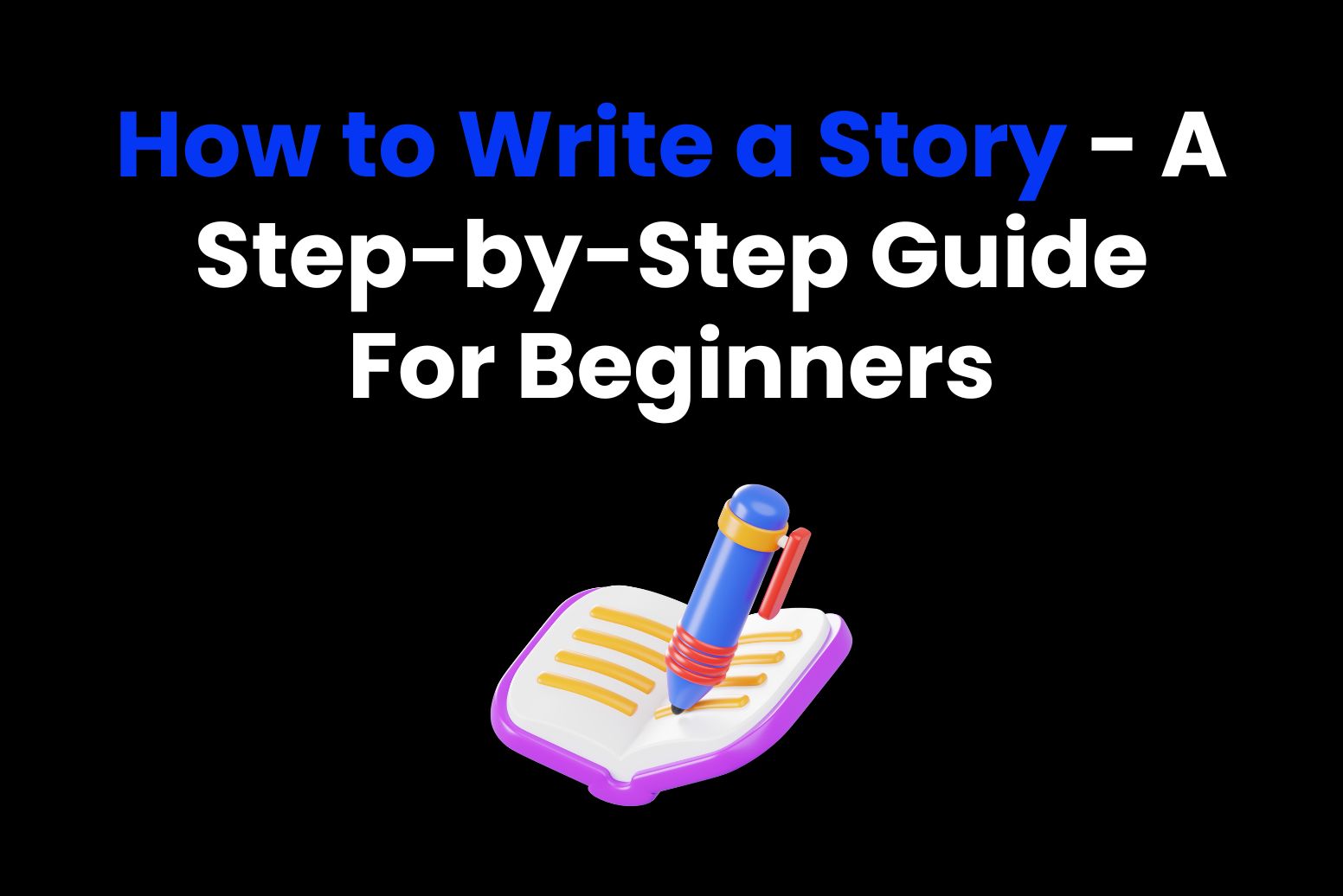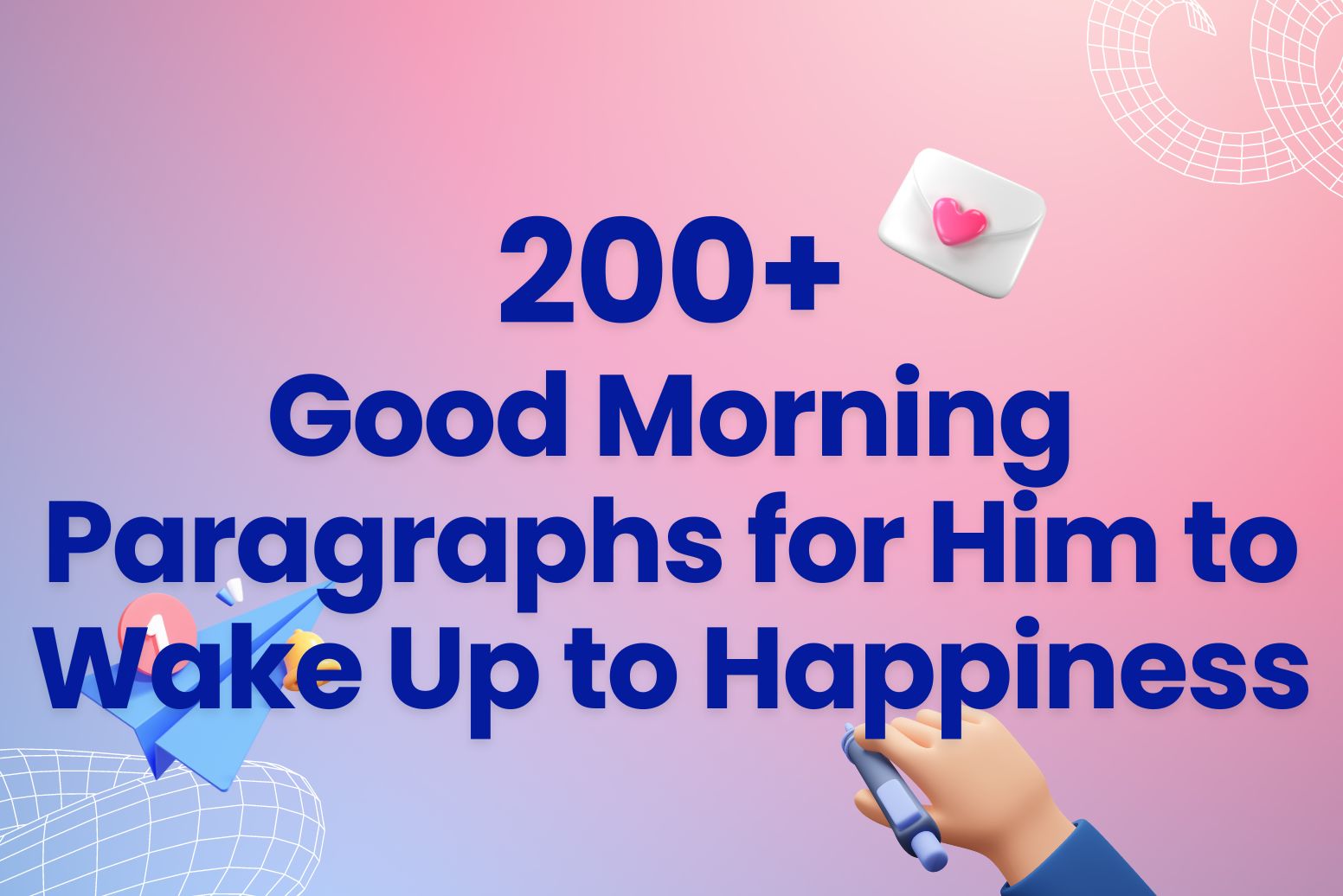Did you know that over 1 million stories come out every year? Have you ever read a story and thought, “Wow, I wish I could write like that”? But how do you get started if you’re new to writing? Well, buckle up because we’re about to take you through everything you need to know on how to write a story that’s engaging, fun, and unique.
And guess what? You don’t even need to be a professional writer to get started because if you have a good idea, patience, and a little bit of guidance (from us), you can easily write a story that people will love. Keep reading till the end to make yourself a writer!

Step 1: Finding Your Story Idea
Alright, let’s start with the basics. Before diving into how to write a story, you need to figure out what you’re writing about. Here’s how you can find the idea of your story:
Start With What You Know
Think about things that genuinely interest you. Do you love reading fantasy books? If yes, your story could be about an epic adventure. Are you into true crime? Then why not write a story around a mystery that needs solving? Start with something familiar and let your imagination do the rest.
For example, let’s say you’re passionate about nature. You could write a story about a young girl who risks her life to save an endangered animal. Or let’s say you’re really into space. Your story could be about a young astronaut who discovers an alien planet that holds unexpected secrets. It doesn’t have to be groundbreaking, just something that resonates with you.
The Importance Of Conflict
Conflict is one of the key elements of a good story. Think of conflict as the fuel that drives your plot. Without it, your story won’t hold your reader’s attention. Conflict can come in many forms, internal or external, and it’s what makes your protagonist’s journey exciting.
For example, in The Hunger Games, the central conflict is clear: Katniss must survive in the deadly arena. This conflict keeps readers turning the pages, eager to see how she’ll overcome each challenge.
In your space story, maybe the astronaut faces a tough decision: should they keep the discovery a secret or risk everything to share it with the world? If they share it with the world, bad people may risk everything just to get power. That’s the kind of conflict that keeps people reading.
Brainstorming Techniques
Sometimes, it’s hard to get started. That’s where brainstorming comes in! Try jotting down whatever comes to mind—don’t worry about it being perfect. You can also use mind maps or story prompts to get your creative juices flowing.
Step 2: Developing Your Characters
Once you’ve got your idea, it’s time to create characters. These are the people your readers will follow, cheer for, and maybe even cry over. So, how do you create relatable, compelling characters? Let’s dive in on how to write a story that has strong characters.

Create Relatable Characters
Your characters are the heart of your story. If your readers don’t care about your characters, they won’t care about your story. Your protagonist should have strengths, weaknesses, dreams, and even flaws because that’s what makes them human.
For example, your astronaut character could be smart and brave but also struggling with loneliness. This makes them relatable, and readers will root for them to succeed.
To understand it better, you can take Harry Potter, for example. Harry’s not perfect—he’s brave, yes, but he’s also a bit reckless and insecure at times. These imperfections make him feel real, and readers can relate to his struggles. No wonder the story is still loved (and read) today after over 2 decades of its release!
The Protagonist
This is the character who drives the story forward. They should have a clear goal that they’re striving for. Maybe it’s to survive, to find true love, or to solve a mystery. Whatever it is, their journey should be what keeps the story moving.
Let’s say your protagonist’s goal is to make it back to Earth with the alien discovery. Along the way, they might face problems like running out of fuel, dealing with a team member who’s lost trust, or even discovering that the alien planet isn’t as friendly as they thought. Just give them a good name for which you could either use a random name generator or work smartly like us and ask Arvin AI to generate names for them.

The Antagonist
Not every antagonist is a bad guy. The antagonist could be a force of nature, a villain, or even an internal struggle. In The Great Gatsby, for instance, Gatsby is, in many ways, his own antagonist. His idealistic love for Daisy keeps him from true happiness.
In your story, maybe the antagonist isn’t another person but a deadly storm on the alien planet. Or maybe it’s the protagonist’s fear of failing and letting everyone down. The antagonist doesn’t always have to be an obvious villain. It is whatever stands in the way of the protagonist achieving their goal. Anti-heroes are still humans; you can ask Taylor Swift if you want to.
Supporting Characters
Supporting characters are just as important as your main ones. Maybe your astronaut has a best friend who provides support and keeps them grounded, or he finds a girl along the way who is always there for him. Or maybe there’s a grumpy crew member who’s always skeptical about the mission. These characters add depth to your story, and your story needs them.
We decided to get help from Arvin AI to suggest us some characters we could include in our imaginary space story, and here’s what we got:

Step 3: Crafting The Plot
Now that you’ve got your characters, it’s time to put them into a plot. How to write a story so that it keeps readers engaged? Let’s talk more about it!
How To Write A Story With Proper Structure?
Most stories follow a classic structure: beginning, middle, and end. This is like your roadmap; without it, your story might get lost. Here’s what each part should do:
The Beginning:
This is where you set the stage. Introduce your characters, the world they live in, and the conflict they face. You want to grab the reader’s attention from the start. For example, you might start by showing the astronaut preparing for the mission to the alien planet.
The Middle:
This is where the action happens. Your protagonist faces challenges, grows, and works toward solving the conflict. Think about The Lion King. Simba’s exile and eventual return to face his past is the heart of the story. In the middle of your space story, maybe the astronaut has to deal with a malfunction on the ship or a dangerous alien creature.
The End:
You may know how to write a story, but if you don’t know how to end it, it’s not enough. This is where the story wraps up. The main conflict is resolved, and the character either achieves their goal or learns a lesson. Maybe in the end, your astronaut makes it back to Earth, but they’ve learned something important about trust and teamwork.
Plot Twist
One of the best ways to keep readers engaged is with a plot twist. This is where you surprise the reader and change the direction of the story. One thing happens that changes everything; that is the kind of plot twist we’re talking about.
In your story, maybe the astronaut returns to Earth only to find out that the alien planet is about to explode, and the discovery they brought back could save or destroy humanity. That’s a twist that changes everything! A good twist will leave your readers talking and commenting long after they’ve finished your story, so take your time and think out of the box.
Step 4: Setting The Scene
The setting is more than just a backdrop for your characters. The setting is the world your characters live in, and it helps create the mood of your story.

World-Building
Whether your story is set in a fictional universe or in a small town, your setting needs to feel authentic. If you’re writing fantasy, take time to build the rules of your world. If it’s contemporary, make sure the details reflect the real world.
Think about what makes your setting special. Is it a bustling city? A quiet village? Or, in your case, a distant alien planet? A strong setting makes your story feel real and gives readers something to imagine.
In your space story, you could describe the alien planet like this: “The sky was a deep shade of purple, and strange plants with glowing blue flowers lined the rocky path. The air was thin, but the heat from the nearby sun made everything burn.”
In Harry Potter, J.K. Rowling built an entire magical world, from Hogwarts to Diagon Alley. Every detail, from the floating candles to the enchanted broomsticks, adds richness to the story. You remember those details, and we remember those details, so you need to give your readers something to remember, too!
Using Sensory Details
Don’t just tell readers where your story takes place; instead, show them! Use small details to help readers picture the world. If it’s cold, describe the chill in the air. If it’s bright, describe the light shining down. Maybe on the alien planet, the air smells like sulfur; how would people know this unless you tell them?
Great settings are described with more than just what we see. Use all five senses to bring your world to life. What does the air smell like? What sounds fill the scene? (Don’t tell us you didn’t imagine the Netflix “Tudum” here).
Step 5: Writing Dialogue
Now, we all know that dialogue is the conversation between characters, but there’s a lot more to it. It’s a big part of how they interact and how your readers get to know them. If you want your story to go popular and sell thousands of units, you must have some dialogues that will be a TikTok trend for years and years to come, or at least memorable.
Keep It Natural
When writing dialogue, make it sound like something real people would say. People don’t always speak in perfect sentences, so it’s okay if your characters don’t always sound polished. Let them stumble over words or interrupt each other.
For example, if two characters are having a tense conversation about the mission, it might look something like this:
“You don’t get it,” said Jenna. “We can’t just give up now.”
“I’m not giving up,” said Tom. “I’m trying to keep us alive.”
Give Characters A Unique Voice
Each of your characters should sound a little different because they’re not all reading from the same script, okay? Some of your characters might be quiet, while others may talk enough to make everyone crazy.
Maybe one of your characters uses more slang or speaks very formally, while the other gives life lessons in every sentence they use. Many people will love a character with a good sense of humor, while others will appreciate how polite the other is. You need diversity in your characters as well as their voices!
Step 6: Writing The First Draft
Once you have a solid idea of your characters, plot, setting, and all the main pieces of your story, it’s time to sit down and start writing your first draft. This is where the magic happens: when you start putting your ideas into words and see your story take shape.
Now is not the time to worry about perfection. At this point, you just need to focus on getting the points down because this is just the starting point and not the finished product. The goal is to get your ideas out of your head and onto the page.
The more you write, the clearer things will become, and you’ll start to see the direction your story is taking. Even Ernest Hemingway said, and we’re quoting it here: “First draft of everything is shit,” so if your first draft doesn’t look good enough, it’s okay (because, let’s be honest, books written by Ernest Hemingway are some of the best books ever!) Just keep writing!

Step 7: Editing Your Story
And now, it’s time for the real magic to happen! How to write a story and how to edit a story; you need to master both aspects. Once you’ve finished your first draft, take a break. Seriously. Step away from it for a little while, whether that’s a few hours, a day, or even a week (depending on how much time you have). When you come back with a clear mind, you’ll notice things you missed while you were writing. Follow these steps to edit your story to perfection:
Read Through Your Draft
When you do come back to read it, go slow. Don’t rush through it like you’re just checking it off your to-do list. Read each sentence carefully and pay attention to the details. As you read, you’ll likely spot things like awkward sentences, missing words, or places where the story doesn’t quite make sense.
Cut What’s Not Working
Once you’ve read through your draft and identified areas that need fixing, it’s time to be a little tough on yourself. If you find parts of the story that slow things down or don’t add anything to the overall plot, it’s okay to cut them out.
Step 8: Sharing Your Story
And now, it’s time for the most exciting part! From the moment you were thinking “how to write a story” to now when you’re thinking “who will read my story first,” you’ve come a long way! It’s time to share your story with the world because, at the end of the day, stories are meant to be shared with the world.
Pro Tip: Use bookstagram hashtags in your posts to help similar book lovers find your stories!

FAQS About How To Write A Story
Here are a few of the most frequently asked questions about how to write a story:
What are the 5 elements of a good short story?
Here are 5 elements of a great story: strong characters, a clear plot, a setting, a theme, and conflict and resolution.
What is the climax of a story?
The climax is the most intense, exciting, or emotional part of a story. It’s the turning point where the main conflict reaches its peak, and the outcome becomes clear.
What should I do if I get writer’s block?
Writer’s block happens to everyone at some point, but it doesn’t have to stop you from writing. Sometimes, the best thing to do when you’re stuck is to step away for a while. Go for a walk, do something creative (like drawing or cooking), or simply relax. Free writing also helps!
Take Home Message
And there you have it! You now know how to write a story that keeps readers hooked from the first word to the last. Don’t worry if your first draft isn’t perfect—every great writer has gone through their fair share of edits and rewrites. The important thing is to keep writing, experimenting, and finding your voice. Soon enough, you’ll have a story that feels just right. So, get started, and get help from Arvin AI whenever you need! Your story is waiting to be told!






